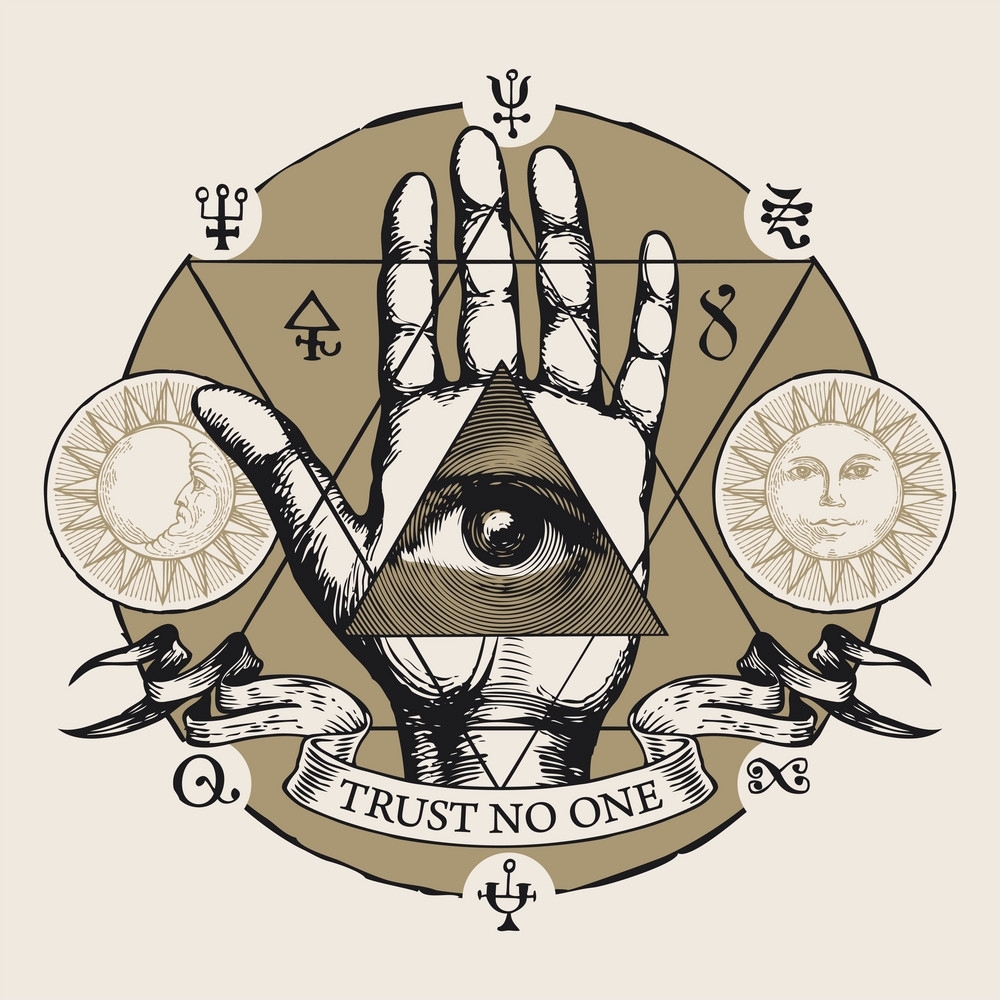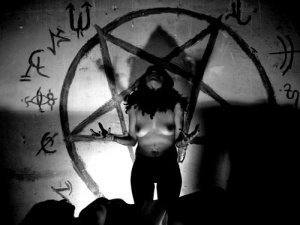I was initially compelled to research Satan as I was endeavoring to refine my theistic beliefs. The first question is an obvious one: who is Satan?
The knee-jerk reaction one generally has in the United States is to regard the figure of Satan from not merely a Judeo-Christian perspective, but also the sum of every pop-culture manifestation of Satan in the media (particularly in the 1960’s-80’s) – as Old Nick, the wily businessman; as an excellent fiddle player; as a red-skinned man with a pointed goatee, horns and a pitchfork. On top of this lens, we must also consider the tremendous negative connotations associated with the figure of Satan, as most morally reprehensible behavior has been historically deigned ‘Satanic’ by the papacy.
However, the anthropological and theological record of Satan reveals a VERY different portrait.
Pinpointing the origin of the Satan concept is difficult, because Satan as we know Him today is an advent of the past several hundred years. In the pre-Biblical era, in the Fertile Crescent, polytheism was the dominant form of metaphysics. Nations, such as Sumer, were comprised of many city-states and tribal authorities, all of whom had their own representative deity. These deities interacted with the deities of other groups anthropomorphically – marrying, bearing progeny, and sometimes, going to war. As Margaret Murray wrote in The God of the Witches:
“The idea of dividing the Power Beyond into two, one good and one evil, belongs to an advanced and sophisticated religion. In the more primitive cults the deity is in himself the author of all, whether good or bad. The monotheism −of early religions is very marked, each little settlement ok−group of settlements having its one deity, male or female, whose power was co−terminous with that of his worshippers. Polytheism appears to have arisen with the amalgamation of tribes, each with its own deity. When a tribe whose deity was male coalesced with a tribe whose deity was female, the union of the peoples was symbolised in their religion by the marriage of their gods. When by peaceful infiltration a new god ousted an old one, he was said to be the son of his predecessor. But when the invasion was warlike the conquering deity was invested with all good attributes while the god of the vanquished took a lower place and was regarded by the conquerors as the producer of evil, and was consequently often more feared than their own legitimate deity. In ancient Egypt the fall from the position of a high god to that of a “devil” is well exemplified in the god Seth, who in early times was as much a giver of all good as Osiris, but later was so execrated that, except in the city of his special cult, his name and image were rigorously destroyed. In the study of the Horned God this fact of the fall from godship to devildom must be borne in mind.”
It is important to note that these transactions are hardly as instantaneous and simplistic as the above quote implies. Murray expands on this later in the same chapter:
“No religion dies out with the dramatic suddenness claimed by the upholders of the Complete−Conversion theory. The constant influx of Pagans through several centuries more than counterbalanced the small number of immigrant Christians. The country must therefore have been Pagan with Christian rulers and a Christian aristocracy. A parallel case is that of Spain under the Moslems. There the rulers were of one religion, the people of another, the popular religion receiving continual reinforcements from abroad. In the case of Spain the popular religion organised by the civil power drove out the superimposed cult. In England, however, the final conquest was by the Normans, whose ruler was of the same religion as that of the king whom he defeated; but the Norman people, like the English, were largely of the Old Faith, and the Conquest made little difference to the relative position of the two religions. Therefore though the rulers professed Christianity the great mass of the people followed the old gods, and even in the highest offices of the Church the priests often served the heathen deities as well as the Christian God and practised Pagan rites. Thus in 1282 the priest of Inverkeithing led the fertility dance round the churchyard; in 1303 the bishop of Coventry, like other members of his diocese, paid homage to a deity in the form of an animal; in 1453, two years before the Rehabilitation of Joan of Arc, the Prior of Saint−Germain−en−Laye performed the same rites as the bishop of Coventry. As late as 1613 de Lancre can say of the Basses Pyrénées, “the greater part of the priests are witches”, while Madame Bourignon in 1661 records at Lille that “no Assemblies were ever seen so numerous in the City as in these Sabbaths, where came People of all Qualities and Conditions, Young and Old, Rich and Poor, Noble, and Ignoble, but especially all sorts of Monks and Nuns, Priests and Prelates”. The political aspect of the organisation is well exemplified in the trial of the North Berwick witches, when at the instance of their Grandmaster they attempted to kill James VI. Another example is found among the Elizabethan State Papers; “The names of the Confederates against Her Majesty who have diverse and sundry times conspired her life and do daily confederate against her Ould Birtles the great devel, Darnally the sorcerer, Maude Two−good enchantress, the ould witch of Ramsbury”.”
(As an aside: It is for this reason that the first three of the Ten Commandments revealed to Moses by God are concerned with idolatry and the “jealous nature of God.” In Moses’ time, early Judaism – and indeed, monotheism as a concept in general – was competing with polytheistic pagan religions. In fact, the translation of the Third Commandment as “taking the name of God in vain” may be a poor translation; the original Hebrew interpretation is better understood as “using the name of God wrongfully.” This distinction is important historically, because the same polytheistic pagan religions mentioned before – like, for example, the Egyptians – would use idols representative of, or invoke the name of, their patron deities for use in sorcery. Prohibitions of sorcery are abound in the Christian canon. Recall, however, that in Judaism, Satan is not a separate character in the pantheon, but rather, one of several “severe aspects of God” – and that in Jewish mysticism, Kabbalah, the only constraint is that the magician must be a man of over forty years of age. Always recall that Judaism and Christianity are VERY different religions, despite deriving from similar source material.)
For several thousand years following the rise of Christianity, priests professing the word of Jesus also catered to the pagan rites of the lower class. This resulted in a diasporia of pagan concepts into Christian practice. The idea of Satan was no different. As Christianity became less interested in the assimilation of pagan practice, and more concerned with the bolstering of its own particular form of worship, anything pagan came to represent evil forces. However, this was not strictly a Christian phenomenon, as Murray also explains:
“The records of the Middle Ages show the ancient god was known in many parts of the country, but to the Christian recorder he was the enemy of the New Religion and was therefore equated with the Principle of Evil, in other words the Devil. This conception, that a god other than that of the recorded must be evil, is not confined to Christianity, or to the Middle Ages. St. Paul, in the First Epistle to the Corinthians, expressed the same opinion when he wrote, “The things which the Gentiles sacrifice, they sacrifice to devils and not to God. Ye cannot drink the cup of the Lord and the cup of devils; ye cannot be partakers of the Lord’s table and the table of devils”. The author of the Book of Revelation is equally definite when he calls the magnificent altar of Zeus at Pergamos “the throne of Satan”, “I know thy works and where thou dwellest, even where Satan’s throne is”. In 1613 Sebastian Michaelis spoke with no uncertain voice, “The Gods of the Turks and the Gods of the Gentiles are all Devils”. In India, Hindus, Mahommedans and Christians unite in calling the deities of the aboriginal tribes “devils”. The gentle peaceable Yezidis of modern Mesopotamia, whose god is incarnate in a peacock or a black snake, are stigmatised as “devil−worshippers” by their Moslem fellow−countrymen. As late as the nineteenth century Christian missionaries of every denomination, who went out to Convert the heathen in any part of the world, were apt to speak of the people among whom they laboured as worshippers of devils, and many even believed that those to whom they preached were doomed to hell−fire unless they turned to the Christian God. The gods of the Pagans were often accredited with evil magical powers, which could be mysteriously communicated to the priests. Against such powers of hell the Christian missionaries felt themselves strengthened by the powers of heaven; and the belief that the devil had been defeated by the Archangel Michael backed by the whole power of the Almighty gave them courage in the contest.”
Thus, Satan emerges in the historical record – whether it’s Christian, Muslim, or any other ‘dominant world religion’ – as an amalgamation of all of these pagan deities. This explains why modern, “cartoony” interpretations of Satan closely resemble various Greek deities – Pan (cloven hooves, half-man half-goat, horned, associated with the phallus); Poseidon (the God of the Seas, ie. Leviathan [The Serpent of the Deep], holding a trident [pitchfork]); etc. – and pagan rites of animal sacrifice and sorcery became the domain of evil witches.
In this respect, Satan is a universal figure, whose consistent internal narrative represents the voice of the disenfranchised lower class, the natives subjugated by occupying forces, or simply put, the unsung minority. This is the ‘adversarial’ appeal of revering Satan; it pays homage to the victims of religious imperialism, and indeed any form of imperialism. Whether He’s a serpent, a beautiful fallen angel, a peacock-winged deity, or a sinister-looking goat-man wielding a pitchfork, He assumes the form of whatever upsets the religious status quo, wherever He is alleged to appear. This is no coincidence.
So, to answer the initial question: Satan is the adversary of cosmic imperialism, whatever form it assumes. As a theistic Satanist, I pay homage to my spiritual liberator.


